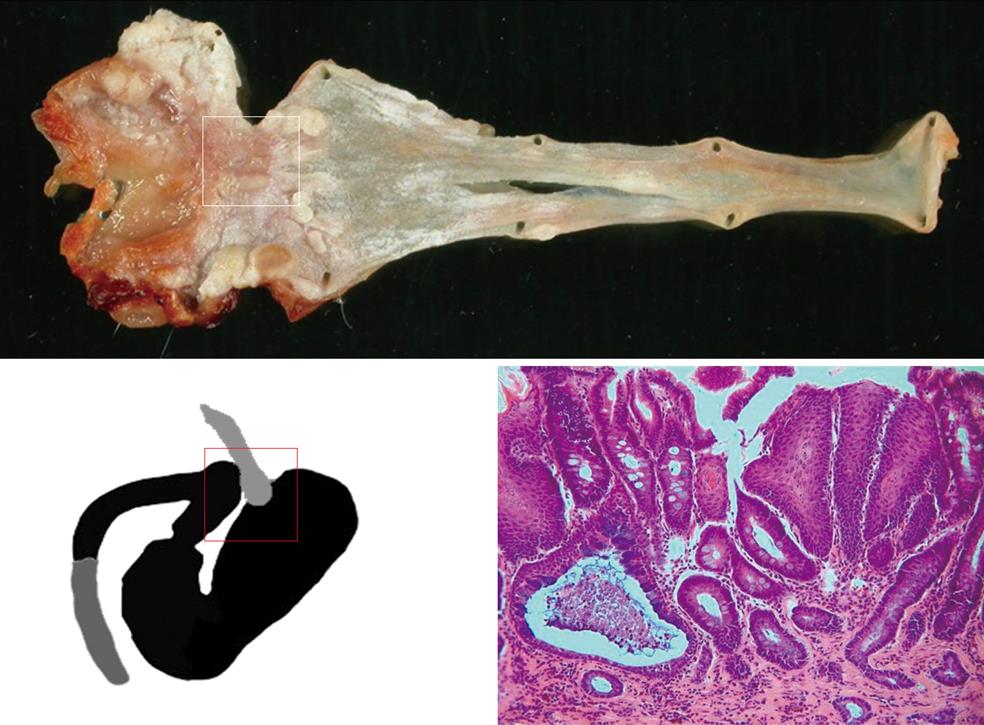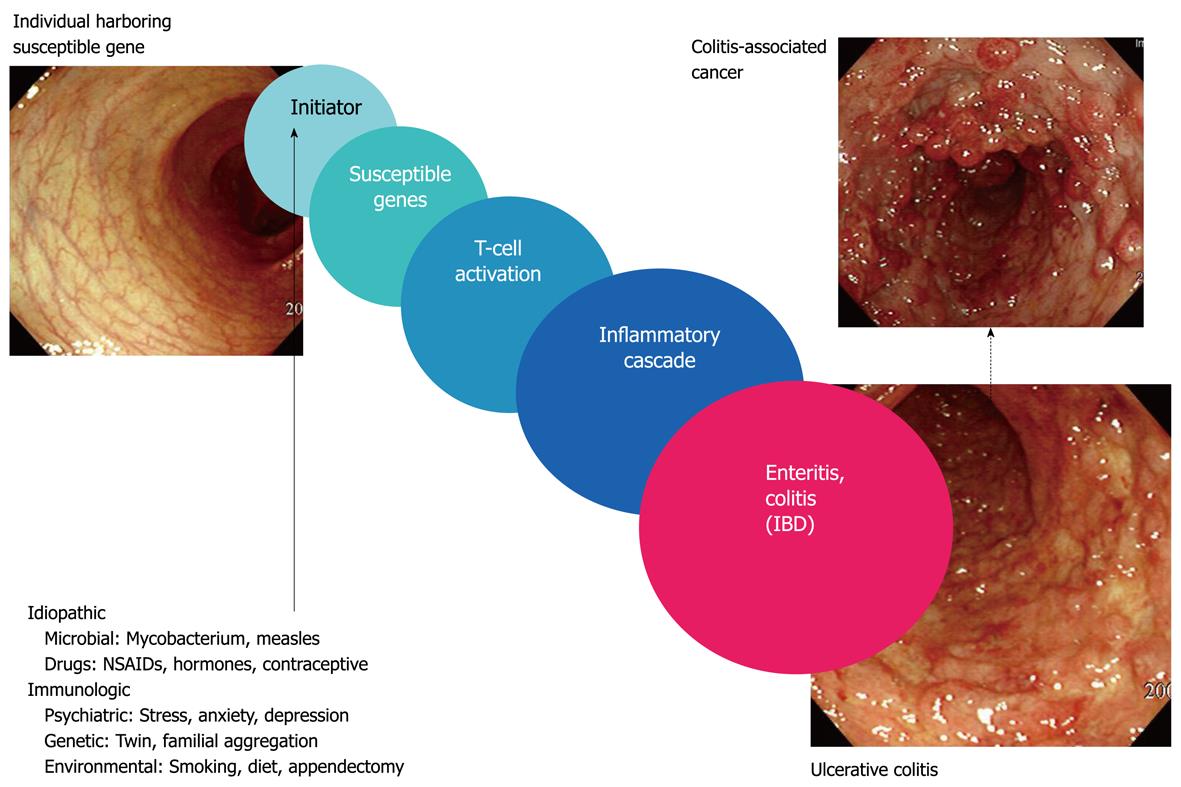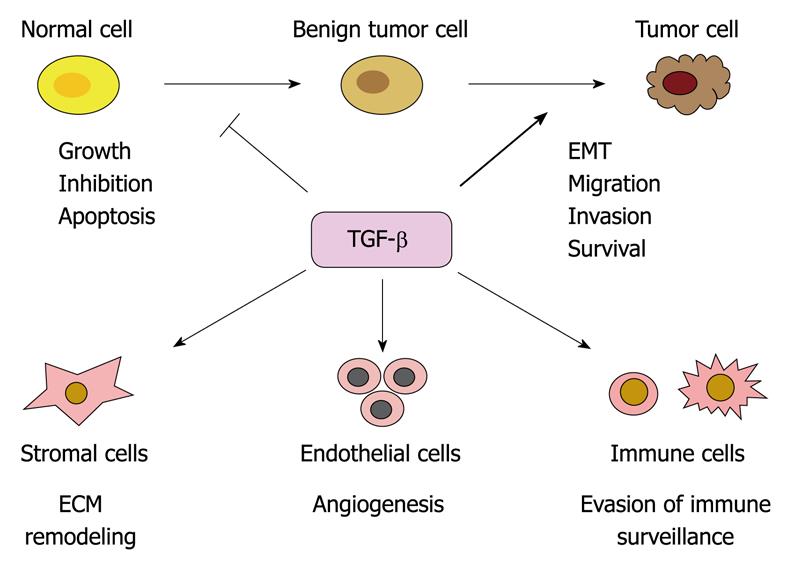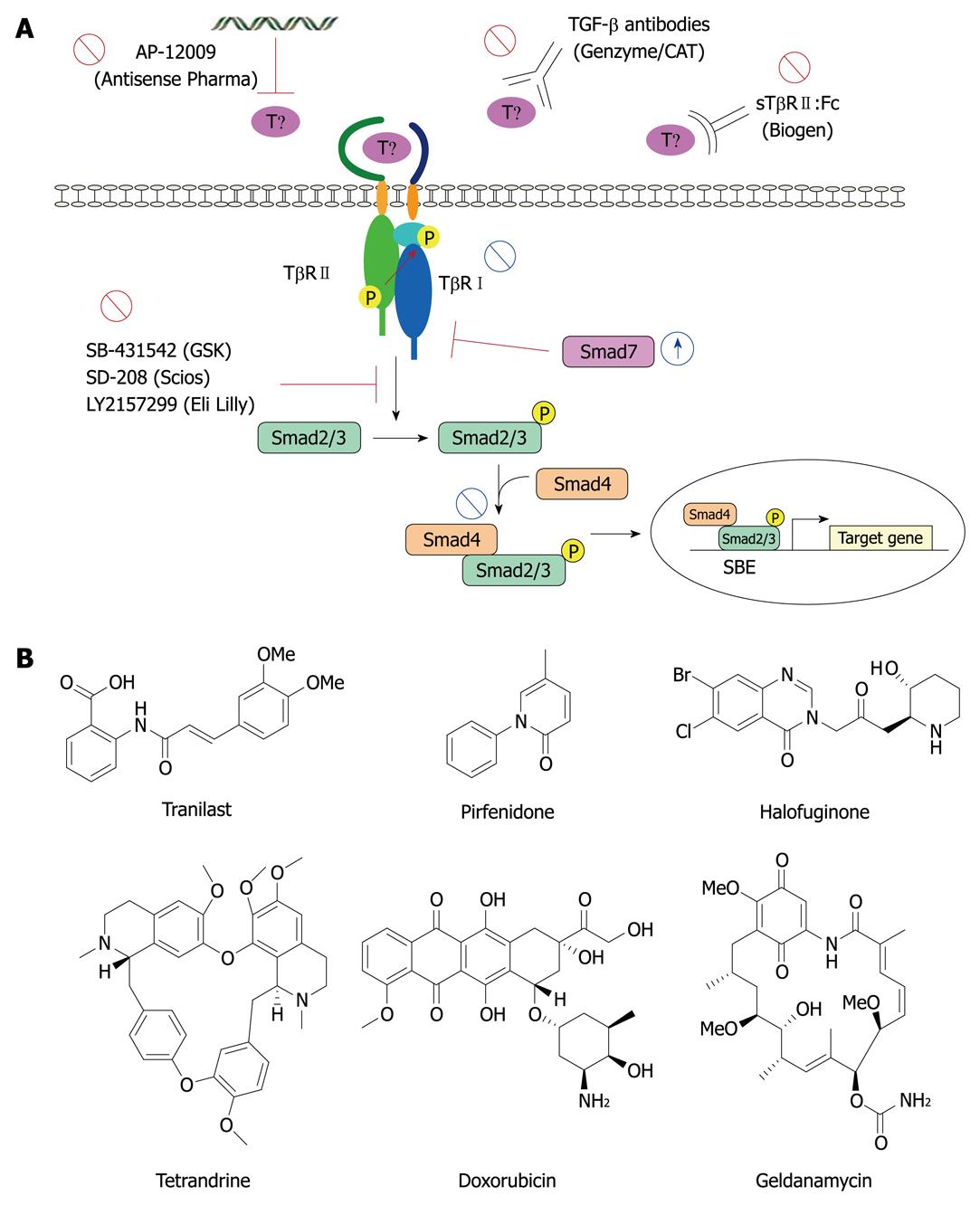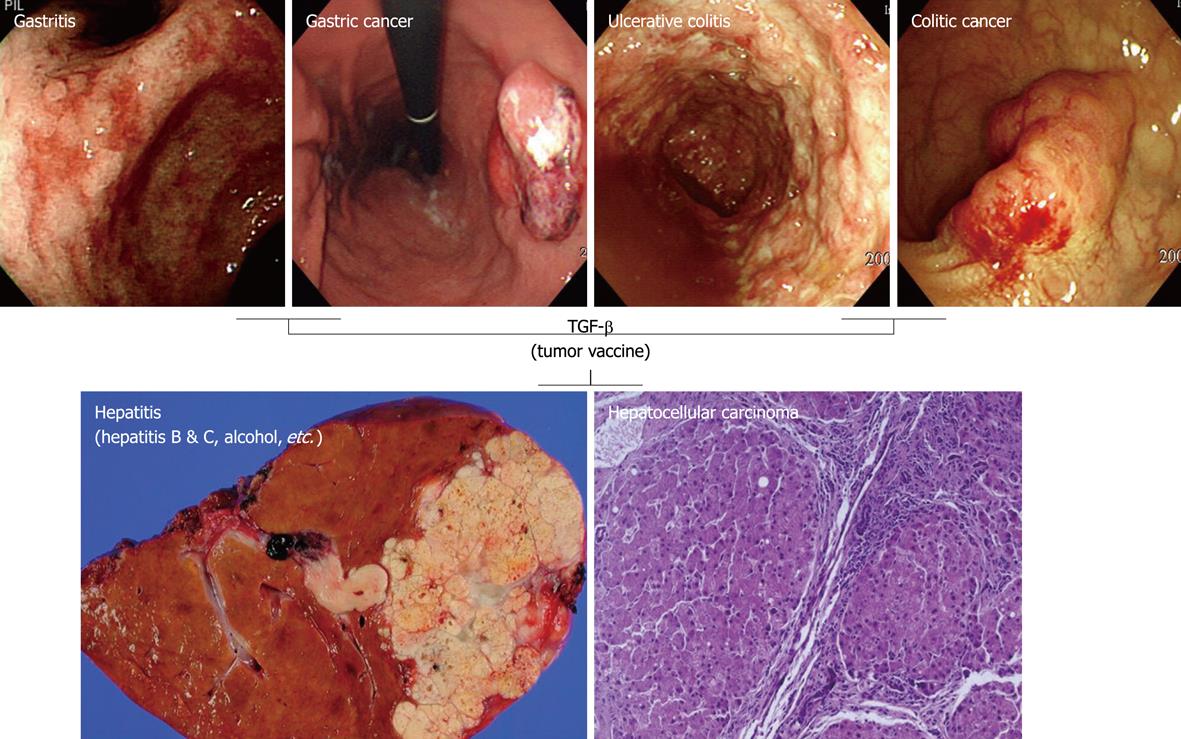Copyright
©2010 Baishideng.
World J Gastroenterol. May 7, 2010; 16(17): 2080-2093
Published online May 7, 2010. doi: 10.3748/wjg.v16.i17.2080
Published online May 7, 2010. doi: 10.3748/wjg.v16.i17.2080
Figure 1 Connection between inflammation and carcinogenesis as demonstrated in a rat model of Barrett’s esophagus.
With the application of surgical bypass, esophagoduodenostomy (red boxed), overt discolored lesions (white boxed) were noted at the esophagogastric junction, which showed the existence of intestinal metaplasia against a background of squamous epithelium. These animal models provided evidence of the cross-linking between inflammation and premalignant lesions.
Figure 2 Inflammatory bowel disease (IBD) and colitis-associated cancer.
The cause of IBD is idiopathic because several etiologies have been suggested including microorganisms, drugs, psychiatric illness, genetic abnormality, and environmental factors. However, when individuals that harbor IBD susceptibility genes are exposed to the above-mentioned etiological factors, they experience T cell activation, after which perpetual inflammatory cascades lead to enteritis or colitis. Repeated bouts of chronic colitis alone provoke colitis-associated cancer, which emphasizes the cross-linking between inflammation and carcinogenesis. NSAIDs: Nonsteroidal antiinflammatory drugs.
Figure 3 Role of transforming growth factor (TGF)-β in cancer progression.
TGF-β is a secreted polypeptide that signals via receptor serine/threonine kinases and intracellular Smad effectors. TGF-β inhibits proliferation and induces apoptosis in various cell types. Accumulation of loss-of-function mutations in the TGF-β receptor or Smad genes classifies the pathway as a tumor suppressor in humans. In addition, various oncogenic pathways directly inactivate the TGF-β receptor-Smad pathway, thus favoring tumor growth. On the other hand, all human tumors overproduce TGF-β whose autocrine and paracrine actions promote tumor cell invasiveness and metastasis. Accordingly, TGF-β induces epithelial to mesenchymal transition (EMT).
Figure 4 Therapeutic target of TGF-β signaling.
A: TGF-β signaling and points of therapeutic intervention; B: Structures of multi-action TGF-β signal inhibitors. SBE: Smad binding element.
Figure 5 TGF-β1 as pivotal tumor vaccine based on anti-inflammatory actions that block progression from inflammatory lesions to precancerous lesions/cancer.
Chronic inflammation induced by biological, chemical, microbial and physical factors is associated with increased risk of human cancer at various sites. Inflammation facilitates initiation of normal cell transformation, growth, and progression to malignancy through production of pro-inflammatory cytokines and diverse reactive oxygen species. In this pathway, TGF-β plays a key role in chemoprevention through anti-inflammatory and anti-mutagenic actions.
- Citation: Hong S, Lee HJ, Kim SJ, Hahm KB. Connection between inflammation and carcinogenesis in gastrointestinal tract: Focus on TGF-β signaling. World J Gastroenterol 2010; 16(17): 2080-2093
- URL: https://www.wjgnet.com/1007-9327/full/v16/i17/2080.htm
- DOI: https://dx.doi.org/10.3748/wjg.v16.i17.2080









